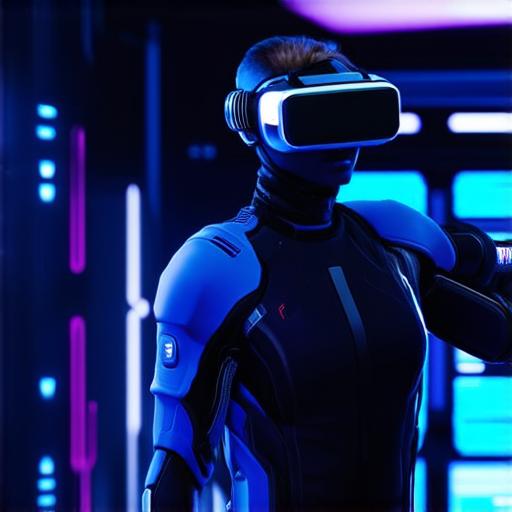
1.
Unity
Unity is a popular game engine that has been used to create over 50% of all VR games. It also offers powerful tools for developing VR training programs. With Unity, developers can create interactive simulations and scenarios that allow learners to practice skills in a safe, controlled environment.
1.
Unreal Engine
Unreal Engine is another popular game engine that has been used to create immersive VR experiences. It offers a wide range of features and tools for creating interactive simulations, including support for real-time rendering, animation, and physics. Unreal Engine also supports collaborative development, allowing multiple users to work together on the same project in real-time.
1.
Articy Draft
Articy Draft is a software tool specifically designed for creating virtual reality training programs. It offers a wide range of features and templates for creating interactive scenarios, including support for branching paths, decision-making, and feedback mechanisms. Articy Draft also supports real-time rendering and animation, allowing developers to create highly engaging and immersive learning experiences.
1.
Stencyl
Stencyl is a software tool that allows users to create interactive simulations and games without any coding experience. It offers a drag-and-drop interface that makes it easy to build VR training programs, including support for branching paths, decision-making, and feedback mechanisms. Stencyl also supports real-time rendering and animation, allowing developers to create highly engaging and immersive learning experiences.
1.
Aurasma
Aurasma is an augmented reality (AR) platform that can be used to create VR training programs. It offers a range of features and tools for creating interactive simulations and scenarios, including support for real-time rendering, animation, and physics. Aurasma also supports collaborative development, allowing multiple users to work together on the same project in real-time.
1.
Tilt Brush
Tilt Brush is a software tool specifically designed for creating virtual reality training programs. It offers a range of features and tools for creating interactive scenarios, including support for branching paths, decision-making, and feedback mechanisms. Tilt Brush also supports real-time rendering and animation, allowing developers to create highly engaging and immersive learning experiences.
1.
Oculus Story
Oculus Story is a software tool that allows users to create interactive VR experiences without any coding experience. It offers a range of features and templates for creating immersive scenarios, including support for branching paths, decision-making, and feedback mechanisms. Oculus Story also supports real-time rendering and animation, allowing developers to create highly engaging and immersive learning experiences.
Case Study: Aurasma in Action
Aurasma is an augmented reality (AR) platform that can be used to create VR training programs. One example of how Aurasma has been used in practice is by the Ford Motor Company. The company used Aurasma to create an AR-based training program for its employees, which allowed them to interact with virtual models of their products and learn about new features and functionality. This immersive learning experience helped employees to better understand the products they were building, leading to improved quality and reduced errors.
FAQs
1.
What is virtual reality (VR) training development software?
VR training development software is a type of software that allows developers to create immersive virtual reality experiences for learning and training purposes. These experiences simulate real-world environments and provide users with interactive scenarios that can help them practice skills and gain knowledge in a safe, controlled environment.
1.
What are the benefits of using VR for training?
⟨p⟩VR offers several benefits for training, including improved understanding, increased engagement, and enhanced retention. It also allows learners to practice skills in a safe, controlled environment, which can reduce errors and improve performance.
1.
What are some popular virtual reality training development software options?
Some popular virtual reality training development software options include Unity, Unreal Engine, Articy Draft, Stencyl, Aurasma, Tilt Brush, and Oculus Story. Each of these tools offers a range of features and templates for creating immersive learning experiences.
